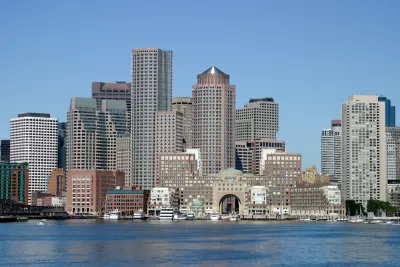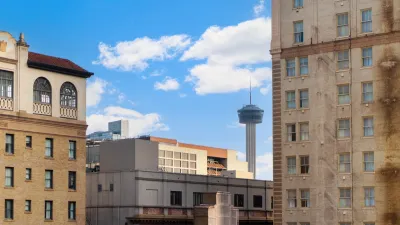When workers can't afford to live near jobs, the results are more than just housing cost burdens.

Dwyer Gunn takes a closer look at several recent and forthcoming research papers on increasing housing costs and the economic and job market effects. A new Urban Institute feature shows the outcome of spatial mismatch, where there are discrepancies between the location of workers and the location of employment opportunities, writes Gunn:
When rising rents drive workers to live too far from available jobs to apply for them, businesses and the economy suffer as well. It's not hard, after all, to imagine a coffee shop or restaurant that forgoes business, and economic growth, because it isn't able to hire the workers it needs to provide adequate customer service.
In urban areas where housing demand exceeds supply, developers would be expected to respond by producing more housing. However, this has not been the case, notes Gunn. "And while some regions do face geographic barriers (e.g. oceans) that can limit spaces to build new housing, most economists point to a policy choice—restrictive zoning and land-use regulations that effectively limit new building—as a significant driver of the housing-affordability crisis."
In addition to local and regional effects, research shows that these restrictions led to a 36 percent decrease in aggregate national growth between 1964 and 2009. And other research indicates that regulations have also resulted in fewer people relocating to high-productivity parts of the country, such as New York and California, which means economic growth is not resulting in the redistribution of people as it has in the past.
These findings suggest a strong need for zoning reform, transportation improvements that can decrease commute times, and better quality low-wage jobs, concludes Gunn.
FULL STORY: HIGH RENTS ARE STUNTING JOB-MARKET GROWTH

Montreal Mall to Become 6,000 Housing Units
Place Versailles will be transformed into a mixed-use complex over the next 25 years.

Planetizen Federal Action Tracker
A weekly monitor of how Trump’s orders and actions are impacting planners and planning in America.

DARTSpace Platform Streamlines Dallas TOD Application Process
The Dallas transit agency hopes a shorter permitting timeline will boost transit-oriented development around rail stations.

Interactive Map Reveals America's “Shade Deserts”
Launched by UCLA and American Forests to combat heat-related deaths, the tool maps the shade infrastructure for over 360 U.S. cities.

Bicycles and Books — In Sacramento, Libraries Now Offer Both
Adult library card holders can check out e-bikes and e-trikes for up to one week.

Colorado Landfills Emit as Much Pollution as 1M Cars
Landfills are the third-largest source of methane pollution in Colorado, after agriculture and fossil fuel extraction.
Urban Design for Planners 1: Software Tools
This six-course series explores essential urban design concepts using open source software and equips planners with the tools they need to participate fully in the urban design process.
Planning for Universal Design
Learn the tools for implementing Universal Design in planning regulations.
City of Mt Shasta
City of Camden Redevelopment Agency
City of Astoria
Transportation Research & Education Center (TREC) at Portland State University
US High Speed Rail Association
City of Camden Redevelopment Agency
Municipality of Princeton (NJ)





























